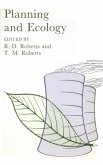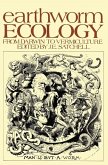For a long time microbial ecology has been developed as a distinct field within Ecology. In spite of the important role of microorganisms in the environment, this group of 'invisible' organisms remained unaccessable to other ecologists. Detection and identification of microorganisms remain largely dependent on isolation techniques and characterisation of pure cul tures. We now realise that only a minor fraction of the microbial com munity can be cultivated. As a result of the introduction of molecular methods, microbes can now be detected and identified at the DNA/RNA level in their natural environment. This has opened a new field in ecology: Molecular Microbial Ecology. In the present manual we aim to introduce the microbial ecologist to a selected number of current molecular techniques that are relevant in micro bial ecology. The first edition of the manual contains 33 chapters and an equal number of additional chapters will be added this year. Since the field of molecular ecology is in a continuous progress, we aim to update and extend the Manual regularly and will invite anyone to depo sit their new protocols in full detail in the next edition of this Manual. We hope this book finds its place where it was born: at the lab bench! Antoon D.L. Akkermans, Jan Dirk van Elsas and Frans J. de Bruijn March 1995 Molecular Microbial Ecology Manual 1.3.6: 1-8, 1996. © 1996 Kluwer Academic Publishers.
Dieser Download kann aus rechtlichen Gründen nur mit Rechnungsadresse in A, B, BG, CY, CZ, D, DK, EW, E, FIN, F, GR, HR, H, IRL, I, LT, L, LR, M, NL, PL, P, R, S, SLO, SK ausgeliefert werden.









